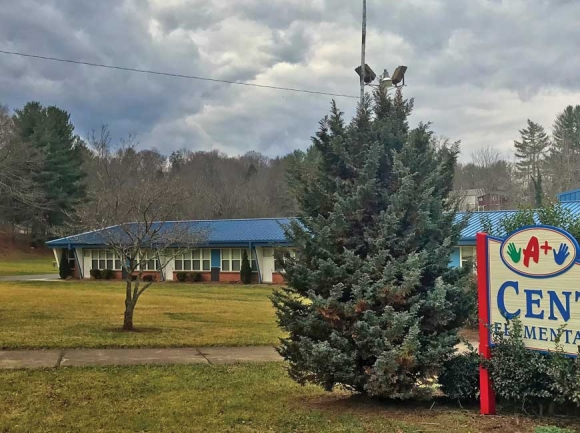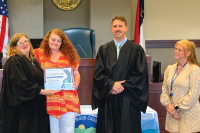A fresh look at Haywood school capacity
 Haywood County Schools’ facility usage could change as development occurs. File photo
Haywood County Schools’ facility usage could change as development occurs. File photo
As the pace of growth and development begins to pick up across Haywood County, demand for basic services like sewer, water, fire and police protection are bound to increase, but another basic component of everyday life in the United States many look at as “intellectual infrastructure” will need to be reassessed as well.
Home to almost 7,100 students, Haywood County’s high-performing public schools — all 15 of them — are comfortably under capacity at the moment, amidst total enrollment figures that have declined nearly 8.4 percent since 2010.
“In general, we really don’t have capacity concerns other than a few elementary locations. That could change if there is a increase in the school-age population,” said Dr. Bill Nolte, superintendent of Haywood County Schools.
That could change quickly; new housing developments planned throughout the county could quickly overwhelm nearby schools.
Over those 15 schools, the total capacity is around 9,400, according to figures provided by HCS and calculated in the wake of the controversial closing of Central Elementary School back in 2016.
But that extra capacity isn’t exactly interchangeable; a half-empty high school means nothing to an overcrowded elementary school on the other end of the county.
Related Items
“To a point, we’re well suited to handle it,” said Chuck Francis, chairman of the Haywood County Schools board for the past 16 years. “We’ve maintained our facilities relatively well. It’s a tough time for money, and we’re being cautious right now, but making sure they’re all in good shape.”
At the same time, Francis said the state needed to spend more money on facilities, especially when a law limiting class sizes is implemented. That law will result in smaller class sizes, and require more space and more teachers. And since it’s coming from Raleigh, of course it’s an unfunded mandate.
“That puts pressure on county commissioners to raise taxes,” Francis said.
Since 2010, the county property tax rate has already risen 7.1 cents per $100 in assessed value to 58.5 cents, and with a new Republican majority coming on to the Haywood Board of County Commissioners in less than a month, there’s not a lot of political will to do that, Francis added, but there aren’t a lot of options if something like The Palisades at Plott Creek becomes a reality.
The controversial development off Plott Creek Road and within sight of Hazelwood Elementary School moved through the planning process with considerable opposition, mostly by neighbors concerned that the 200-something unit complex would negatively affect the views, traffic and overall quality of life in the area.
Also raised at that time were concerns that with an average American family size of 2.6 people per household, it’s quite possible that between 50 and 100 school-aged children will also call the development home.
“Hazelwood’s pretty full already,” Francis said, referring to the nearby school.
While a zoning snafu and a lawsuit have thrown up obstructions to the development, it still stands a fair chance of emerging in the next few years; if it does indeed come to pass, it’s likely there will be a schoolyard shuffle for some students. Rumors of additional developments in other locations throughout the county could have a similar effect.
That would force Francis’ hand, and could lead to drastic action.
“We could redraw the district lines, which is not popular, ever,” Francis said.
School assignment areas are developed in accordance with state requirements and court rulings, and in a non-discriminatory manner, per HCS’ policy manual; the areas must serve all school-age children living in the district and promote effective use of each school facility. Ultimately, the superintendent presents recommendations for board approval, and is further directed to periodically review them.
Francis said that following the North Carolina School Boards Association Annual Conference, taking place this week in Greensboro, he’d have more to report.
“After the election we’d planned to meet with Haywood County Commissioners so they could kind of get a feel for our school facility needs,” he said.
Factoring in to that could be the county’s alternative high school, Central Haywood High School, which recently condemned its gymnasium after an engineering report deemed the building unusable due to ever-widening cracks in the walls.
Another longstanding concern has been the offices currently used by school district administrators; they’re currently located in the Historic Haywood Hospital, a disused former medical facility owned by Haywood County.
The county has been unsuccessful thus far in its efforts to find a better use for the building, despite interest from developers; tax credits that would make the building a more attractive financial proposition for developers haven’t materialized, although another application is pending.
If successful, Haywood Schools administrators would have to find new digs — possibly at Central Elementary that closed in 2016, and possibly at Central Haywood High School.
“We could revisit Central Elementary,” Francis said. “It’s been maintained.”
Haywood schools capacity
Max
Bethel Elementary 672
Clyde Elementary 720
Hazelwood Elementary 720
Jonathan Valley Elementary 552
Junaluska Elementary 552
Meadowbrook Elementary 542
North Canton Elementary 456
Riverbend Elementary 384
Bethel Middle 400
Canton Middle 700
Waynesville Middle 1000
Tuscola High 1200
Pisgah High 1200
Central Haywood High 200
Haywood Early College 200
Source: Haywood County Schools









